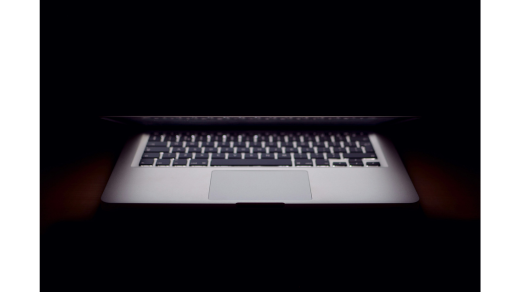
1. What is a smart office?
A smart office refers to a work environment that applies technology to optimize productivity, comfort, and workflow optimization. This ranges from voice-controlled lighting and thermostats to automation and Internet of Things (IoT) devices.
2. What are the key elements of a smart office?
Commonly, key elements include
Smart lighting: Automated or voice-controlled lights for energy efficiency and convenience.
Ergonomic furniture: Adjustable desks, chairs, and stands for comfort and productivity.
High-speed internet: A fast and reliable internet connection is a prerequisite for any smart office.
Smart assistants: Devices like Amazon Echo or Google Home for voice commands and integrations.
Security systems: Smart locks, cameras, and alarms for safety and monitoring.
Smart devices: Laptops, tablets, and other IoT-connected gadgets for enhanced functionality.
3. How do I select a fitting lighting for a smart office?
To set up the right lighting:
Changeable smart lights: One must select lights with dimming or adjustability in color temperature, such as daylight for heightened focus, and warmer tones for relaxation.
Voice-control system: Integrate your lights with a voice assistant, such as Amazon Alexa or Google Assistant, to control with voice commands.
Smart bulbs: Switch to smart LED bulbs that provide energy efficiency and long-term savings.
Great smart lighting solutions from brands like Philips Hue and LIFX.
4. What’s the best ergonomic furniture to spend money on?
Ergonomic furniture can help you feel at ease and produce better. It is worth mentioning the following.
Adjustable standing desk: That type of desk makes it easy to switch between a sitting and a standing position; it reduces pressure.
Ergonomic chair: A chair that provides lumbar support, with adjustable height, and armrests will support posture and reduce the discomfort.
Keyboard and mouse: Ergonomic keyboard and mouse designed to minimize pressure on your hands and wrists.
5. How do I upgrade my internet to be faster in a smart office?
Reliable internet: To start off with any kind of smart office:
Upgrade to router: With the advent of Wi-Fi 6, now upgrade your routers with the faster router that allows smooth performance on a multi-device setup.
Cable Ethernet: Use a wire connection from an Ethernet cable connected to your computer.
Mesh Wi-Fi system: In large office space areas, the best option to receive a solid connection everywhere in an office space would be through the mesh Wi-Fi system.
6. What can smart assistants assist me in for office management?
Amazon Alexa, Google Assistant, and Apple Siri are examples of smart assistants to manage office functions through the use of: Reminders with your calendarCalendaring their own eventsTurning on and controlling smart lights/thermostatsMaking handsfree calls and/or texts Deliver news and also traffic information.
7. Examples of smart devices that can facilitate productivity
Among the smart products, there may be:
Smart speakers: Put them on, for example to play background tracks or podcasts;
Smart monitors; they are adaptive and come equipped with features that include blue light reduction;
Smart thermostats: control to get the comfortable temperature with effective energy use;
Smart plugs: switch on or off, for instance, lights and printers, respectively.
8. Ensuring my smart office is secured
Smart security features are:
Smart locks: These help you lock and unlock your office from a remote location or by biometric authentication.
Smart cameras: Cameras equipped with motion detection, live streaming, and cloud storage.
Smart alarms: Systems that alert you about unauthorized access or security breaches.
Smart doorbells: Devices like Ring enable two-way communication and video recordings of visitors.
9. What is the significance of automation in a smart office?
Automation in a smart office can help streamline tasks and reduce manual effort:
Automated lighting: Lights can turn on/off based on your schedule or motion detection.
Smart thermostats: Set the temperature to adjust automatically when you arrive or leave.
Task automation: Use tools like IFTTT (If This Then That) to automate workflows (e.g., automatically set your calendar to “Do Not Disturb” during focus hours).
10. How do I link my smart office with my already installed devices?
To connect your smart office configuration:
Smart Hubs: With a hub, you can combine all your appliances under one umbrella and control all your appliances with just one application or voice assistant. Third party integration: A lot of the smart devices interact with more than one ecosystem such as Google Assistant, Amazon Alexa, and Apple HomeKit. Ensure that the device you have installed is supported by the platform you are on.
Smart apps: Download and configure apps to control everything from lights and speakers to thermostats and locks.
11. Should I use a standing desk in my smart office?
Standing desks have many benefits:
They improve posture and reduce the risks of sitting for extended periods.
You can alternate between sitting and standing, which can boost energy and productivity.
Many smart standing desks are motorized, making it easy to adjust their height with the push of a button.
12. What are the benefits of a smart thermostat?
Smart thermostats like Nest or Ecobee provide several benefits:
Energy efficiency: They automatically adjust to your schedule, saving energy when you’re not in the office.
Remote control: You can control your office temperature from anywhere using your smartphone.
Learning capabilities: Some smart thermostats learn your preferences over time and adjust accordingly.
13. How can I make my office space more comfortable with smart devices?
Comforting smart devices are;
Smart lighting: It adjusts the light according to your moods or time.
Smart air purifiers: Maintain the cleanliness of the air free from allergens, dust, and other pollutants.
Humidifiers Smart: Controls the humidity level to ensure comfort while working in dry environments.
14. What type of sound system works best in a smart office?
For a smart office, think about these:
Smart speakers: These devices are like Amazon Echo, Google Nest, or Sonos and play music, podcasts, or ambient sound to focus.
Noise-canceling headphones: If you need personal audio, noise-canceling headphones minimize distractions.
15. How can I manage my cables in a smart office?
Organize cables with these steps:
Cable management trays: Hide cables under your desk for a neat look.
Wireless charging stations: Get rid of charging cables altogether by using wireless chargers for phones and devices.
Cable organizers: Bundle cables together with clips and ties to keep them organized.
16. Can smart devices help me monitor my office’s energy consumption?
Yes, smart devices can help you monitor energy consumption:
Smart plugs: Track energy usage for specific devices.
Smart thermostats: Keep track of your heating and cooling expenses.
Energy monitors: Gadgets like Sense can monitor your total energy consumption and provide tips on how to save money.
17. How do I pick the best smart office assistant for my needs?
When selecting a smart assistant:
Compatibility: Ensure it works seamlessly with your devices and apps.
Voice control: Test if the assistant can identify your voice and commands correctly.
Task automation: Look for assistants that can handle more complex tasks like calendar management, reminders, or smart home control.
18. What is the best way to set up multiple monitors in a smart office?
To set up multiple monitors:
Use a monitor arm or adjustable stand to position your monitors at the right height.
Ensure your computer’s graphics card supports multiple screens (or use an external adapter).
Organize the cables using cable management systems. Keep everything tidy.
19. Can I control my office devices from anywhere?
Many smart devices can be controlled remotely:
Smart thermostats can be controlled through mobile apps.
Smart lights and plugs can be turned on/off remotely
Smart cameras can be accessed from your phone and monitor your office.
20. How do I secure my smart office from hacking?
How to keep hackers off your smart office:
Use strong, unique passwords for all devices and accounts.
Enable two-factor authentication for added security.
Regularly update software on all connected devices.
Use a secure Wi-Fi network: Set up a separate Wi-Fi network for smart devices to isolate them from your main personal or work network.
21. What are some productivity tools for a smart office?
Productivity tools to consider:
Project management software like Trello, Asana, or Monday.com.
Time tracking tools like Toggl or RescueTime.
Evernote or Notion, note-taking apps.
Google Drive, Dropbox, or OneDrive, cloud storage.
22. How might I connect a smart coffee machine to my workspace?
A smart coffee maker will let you operate it from outside your office door so that when you arrive in the office, it will be ready to start brewing. It is possible to link up appliances such as Nespresso Expert or Behmor Connected Coffee Maker through apps for scheduling and customization.
23. Can I connect my smart office configuration to my calendar?
Yes, many smart devices can connect with your calendar:
Smart assistants can remind you and schedule meetings.
Smart displays, such as Google Nest Hub, can display appointments.
Smart calendars, like Google Calendar, will sync across all of your devices so that you have everything in one place.
24. What is a smart whiteboard, and should I use one?
A smart whiteboard is, for example, Microsoft Surface Hub or Jamboard by Google. It can be used for collaboration and digital note-taking. It is ideal for brainstorming sessions, presentations, or team meetings, allowing you to draw and save notes directly to the cloud.
25. How do I take care of my smart office setup?
To keep your smart office running smoothly:
Update software and firmware on your devices.
Clean devices like smart speakers and monitors to avoid dust buildup.
Periodically review and optimize your automation settings.
Conclusion
Building a smart office involves the integration of appropriate technology for the comfort, productivity, and security of individuals. With the right devices, good connectivity, and the use of automation tools, you can build an office environment that meets all your needs and keeps you organized and focused.


